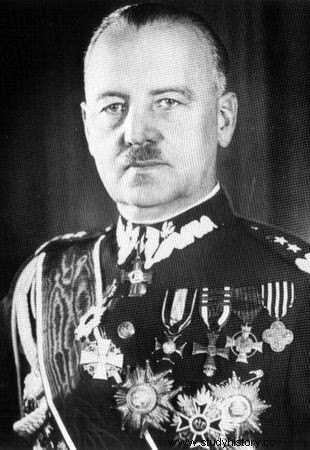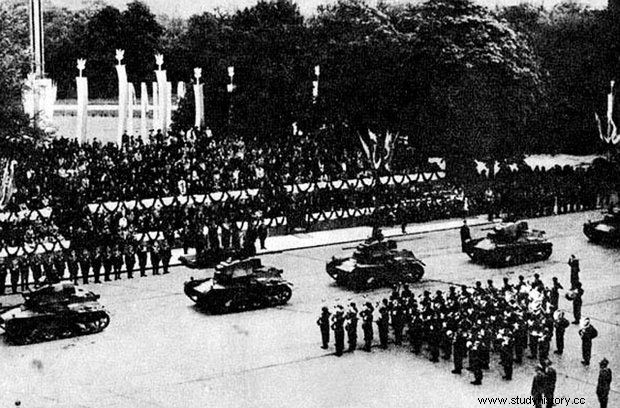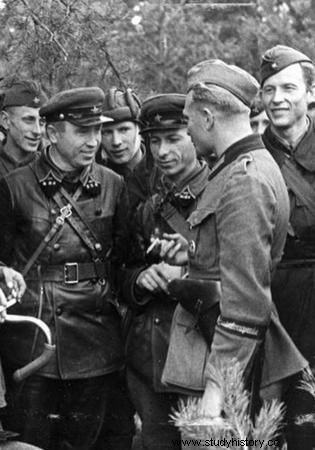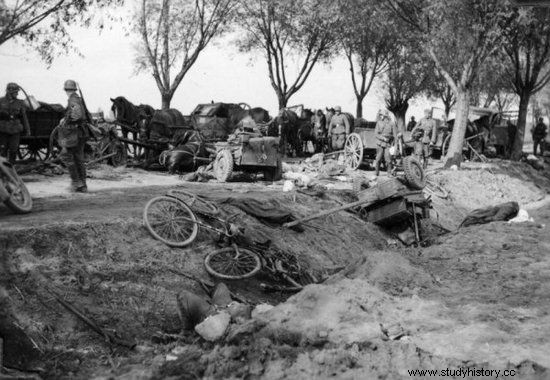The world closely watched the fall of the Second Polish Republic and the unexpected German-Soviet alliance. While Western politicians and societies tried to grasp the situation, Europe lacked a unified Polish voice. It was not until October 12, 1939 that the government of W. Sikorski issued the "Instructions for press offices at Embassies and Consulates General" - it was supposed to be the official Polish position regarding the loss in the September campaign.
Sikorski's government was formed on September 30. The war was already lost then, but Polish diplomacy - based on the network of offices in various European countries and on the newly created structures of the emigration authorities - was still very active. Efforts were made to demonstrate that Polish statehood was not completely liquidated and to maintain the functioning of individual embassies and consulates.
For the purposes of contacts with representatives of other governments and with the European public, the "Manual for press offices at Embassies and Consulates General" was issued in mid-October.

One of the priorities for Władysław Sikorski as Prime Minister and Commander-in-Chief was to prove to the world that Poland still exists as a state.
The document was sent out almost two weeks after Sikorski assumed the office of prime minister. In view of the chaos prevailing at the time, this delay is not surprising. The awkwardness of the general's situation was certainly no less important than the political confusion:he had to, at least to some extent, defend the Sanacja authorities he hated.
At the same time, the Polish defeat had to be presented as even a minimal victory - moral or otherwise. Anything to counterbalance the German and Soviet arguments.
How was the Polish cause defended? There was no shortage of propaganda and ... diplomatic lies.
There could be millions of us (but we were late)
The first point of the instruction published in one of the volumes of "Polish Diplomatic Documents" deals, of course, about the causes of the military defeat . Its official part emphasizes the military advantage of Germany. We read that:
In view of the power disproportion (against 2,000 German planes, including 1,100 bombing ones, Poland deployed only 300 aircraft, including only 40 medium bombings), it was not possible to effectively counteract an air raid by Germany be speechless. (...) [The Polish] High Command could only issue 35 divisions with a strength of 800,000 people, when the Germans immediately threw around 60 divisions on Poland.

Polish military parade in May 1939. The last one before the outbreak of war.
Of course, the Polish government in exile, right after the end of the war, could not have precise information on the number of enemy forces involved, or even on the number of its own troops. Here, however, the first inaccuracies can be seen - they hide more deliberate propaganda than an unintentional mistake.
The number of Polish troops was underestimated by at least 150,000 soldiers . The Polish Army managed to field 39 divisions (and two improvised ones), not 35. We also had 1/3 more planes - around 400, not 300.
Interestingly, the information about the German forces is more or less true, but the Reich had fewer planes. About 1,300 bomber and fighter machines were involved in the invasion, not the same number of fighters. The number of 2,000 aircraft is roughly correct as far as non-combat aircraft are included.
Then it gets much more interesting. For the first cause of disaster it was not so much the technical advantage of the Reich that was recognized as the mobilization ordered too late. The instructions stressed that full mobilization could give Poland about 4 million soldiers. Only that this number has nothing to do with the "Mobilization Plan» W2 «". According to it, the full mobilization was to involve 1.35 million soldiers, not three times as many!
This article has more than one page. Please select another one below to continue reading.Attention! You are not on the first page of the article. If you want to read from the beginning click here.
We almost won! (but the Russians stabbed us in the back)
The further argument explains such optimistic data as to the Polish mobilization potential. The manual presents a vision according to which Poles had a chance to win the September campaign, and the situation would not become hopeless if it were not for the sudden and unexpected Russia's speech. We read the following:

The émigré authorities argued that Poland could have won against Germany, if not for the treacherous attack of the Soviets.
In the period of September 11-12 (...) Polish chances started to improve significantly , leading to a series of victories, the first of which was the victorious battle of General Kutrzeb, who destroyed four German divisions, taking 30,000 prisoners. (...) In the period around September 17, the real possibility of consolidating the Polish front began to emerge. However, it was at this time that the Russian aggression ensued.
This is a fragment of great propaganda importance, but its setting in the facts was only illusory. In fact, the Battle of Bzura - because this is what we are talking about - was, taking into account the Polish possibilities, in its first stage a great success. Only that it did not end with a victory. And it was not the entry of the Soviet troops that decided about its result. In the lexicon "Boje Polskie 1939-1945" we can read:
September 14th (…) the situation on the battlefield has changed dramatically. The opponent gained a decisive advantage in armor and maneuverability. The further attack of the Polish forces meant their destruction .
Also the numbers given in the manual do not match. Poles took not 30,000, but 3,500 prisoners. Almost ten times less. It was the Germans who finally triumphed, taking the incredible 170,000 prisoners.

The Battle of Bzura, presented as a Polish victory, really ended with a disgraceful defeat of General Kutruba's troops. Our propagandists, however, knew theirs.
As for the Soviet invasion; Of course, it cannot be questioned that it sealed the Polish defeat. However, the authors of the instructions made sure that the impression of the inevitability of failure was absolute. It has been written about 100 Russian divisions, while three times less entered Poland .
It is the effect that counts, not the means
The use of propaganda to defend Polish interests should come as no surprise. All other countries, including the German Reich, did the same. One can only wonder how convincing Polish arguments and "lies" were.

Of course, I have only quoted excerpts from the four-page manual above. The document also wrote about the Ukrainian and Belarusian people allegedly cooperating with the Polish authorities enthusiastically, and about the wrong policies of the pre-war authorities. Significantly, the latter allegation only appeared in the classified Explanatory Notes for internal messages.
We even managed to report the positive effects of the campaign. The most interesting is the last of the three points, concerning the inflicting great losses on the Germans. The manual states:
According to Italian sources [German losses] are around 100,000 killed and wounded, 1,000 airmen, 400 aircraft, 1,000 tanks. Hardware losses are very serious. The whole thing needs to be reorganized. The flower of the German army has been ransacked , especially in aviation.
The flower of the German army? This is, unfortunately, a rather exaggerated statement. The casualties on the side of the Reich were not 100,000, but two times less:about 17,000 killed and 36,000 wounded. Interestingly, the number of machines is correct. Ba! We knocked down even more planes - the Germans lost over half a thousand of them according to the "Encyclopedia of World War II". In fairness, however, it should be added that to this day there are speculations that German losses were higher. In 1960, Władysław Pobóg-Malinowski, who wrote in exile, stated that there were only 100,000 killed. So who knows - maybe there was a pinch of truth in all this propaganda? Another thing is that it is rather unintentional…
Source:
- October 12, instruction for press offices at diplomatic and consular posts [in:] Polish Diplomatic Documents. September-December 1939 , ed. Wojciech Rojek, Polish Institute of International Affairs, Warsaw 2007, pp. 186-190.
I compared the data based on:
- Polish battles 1939-1945. Encyclopedic Guide , Bellona, Warsaw 2009.
- Encyclopedia of World War II , MON Publishing House, Warsaw 1975.
- Military Encyclopedia , PWN / Bellona, Warsaw 2007.
- Władysław Pobóg-Malinowski, The latest political history of Poland , Platan, Warsaw 2004.
Buy an interesting book by the author of the article:
